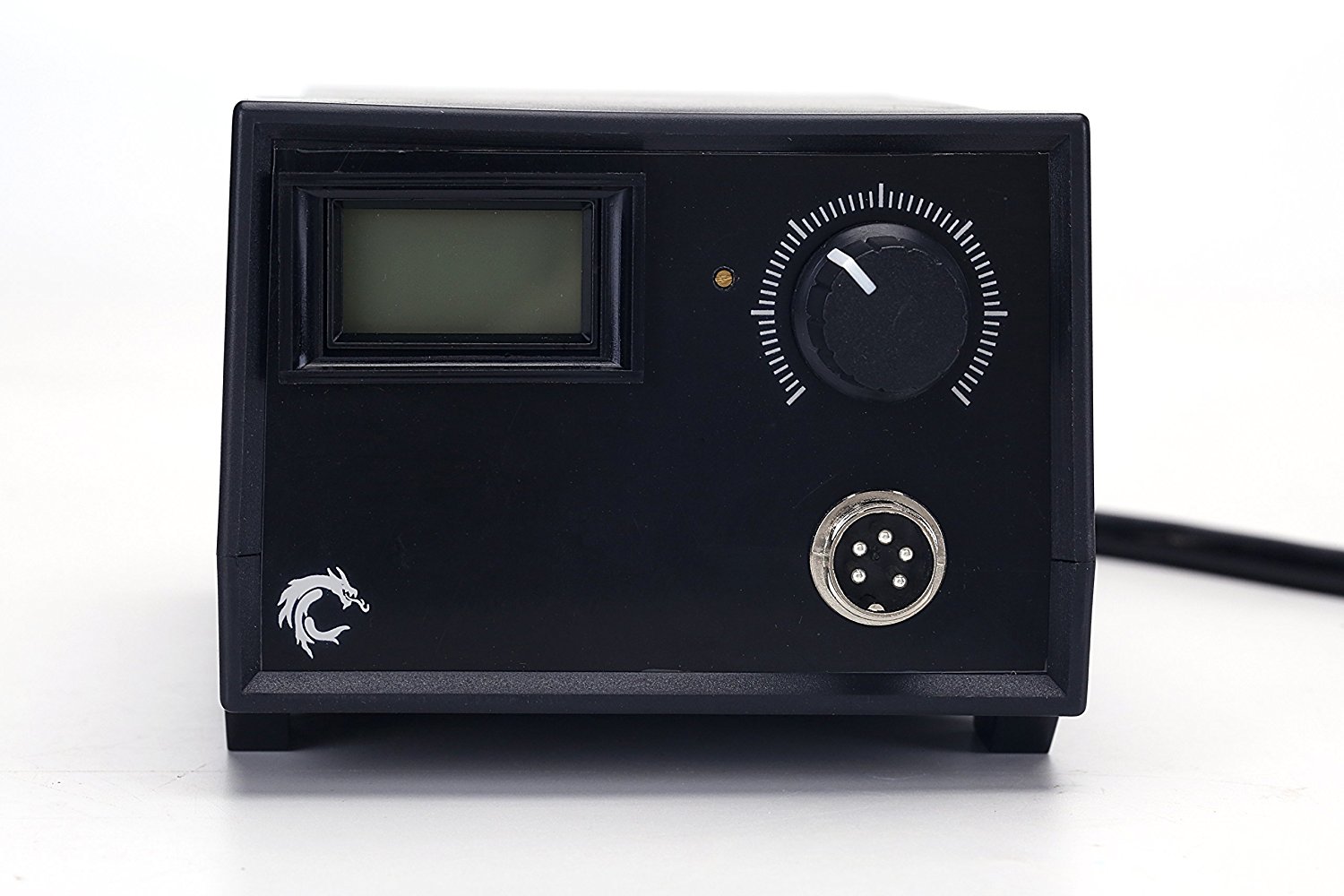Perhaps one of the major adjustments anyone goes through with the Stage 2 pyrography set is learning to read the display in Volts and not oF or oC (degrees Fahrenheit or Celcius respectively).

Image of TRUArt Stage 2 Single pen 60W Kit’s power supply
To set things straight, the LED only displays the voltage. Turning the voltage adjustment knob clockwise or counter-clockwise will increase or decrease (respectively) the voltage output. High voltage translates to a high temperature just as low voltage translates to a low temperature.
Here is usually where the confusion starts.
- Voltage changes are non-linear with the voltage adjustment knob. This means that each line on the knob does not necessarily correspond to the same increment increase or decrease in voltage. For example, a turn from one line to the next line would probably give you a difference of 5 Volts*. From there to the next line would not have the same difference of 5 Volts but probably be a difference 7 or 10 Volts*.
- Changes in voltage are non-linear with temperature change. This follows the same principle stated earlier. For instance, a 5-Volt* increase does not mean a 5 oF or oC increase as well. The temperature change could be much higher.
Inasmuch as we at TRUArt would like to provide precise temperature output instead of voltage readings, it is quite impossible to do so with our current technology. Aside from the limitations of the current electrical designs, there are other factors at play that influence the burning tips’ temperature. These can be any or a combination of shape of the tips, tip gauge (size), ambient temperature, air flow in room, etc.
However, the color of heated Nichrome wire stays fairly constant. Nichrome wire produces a faint red color at 95 oF. Generally, just before tip starts to get that faint red color, the temperature should be around 700 oF. Below is a chart that shows the approximate temperature to the corresponding color of the heated tip.
The chart above is the closest approximation of the color since there are different gauges of Nichrome wires. Other factors also influence the result such as how much light is in the room, personal color perception, and so on. Common gauges used range from 20 to 16 GA.
As always, the best is to try the tip on a scrap piece of the same wood type that will be used in the project (and in the same place, as ambient temperature may have an effect as well). It is the most precise method.
* Figures are only examples set out for the purpose of understanding the mechanics involved and do not necessarily reflect the exact figures or difference shown on the voltage display of the power supply.
